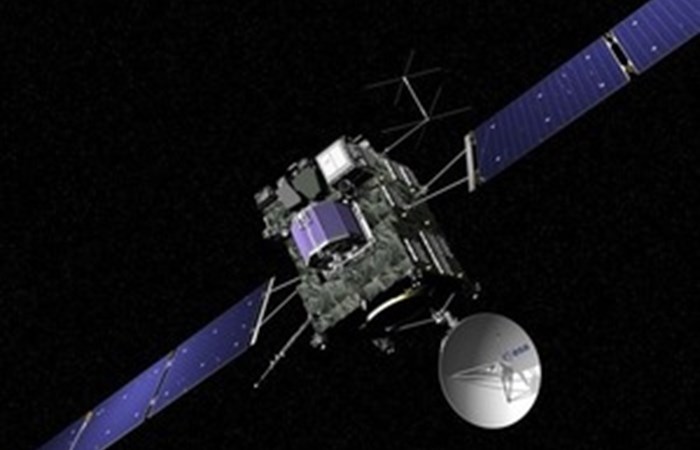UK Space Agency

With Philae now receiving twice as much solar energy as it did last November when it finally came to rest in a shaded spot on Comet 67P, the communication unit on the Rosetta orbiter has now been switched on to call the lander. Although it is probably still too cold for the lander to wake up, the prospects will improve with each passing day.
Waking up at the right temperature and energy
Several conditions must be met for Philae to start operating again. First, the interior of the lander must be at least at 45C before Philae can wake up from its winter sleep. At its new landing site Abydos only a little sunlight reaches Philae, and the temperatures are significantly lower than at the originally planned landing location. In addition, the lander must be able to generate at least 5.5 watts using its solar panels to wake up.
As soon as Philae realises that it is receiving more than 5.5 watts of power and its internal temperature is above 45C, it will turn on, heat up further and attempt to charge its battery.
Contact during comet daytime
Once awakened, Philae switches on its receiver every 30 minutes and listens for a signal from the Rosetta orbiter. This, too, can be performed in a very low power state.
It could be that the lander has already woken up from its winter sleep some 500 million kilometres away from Earth, but does not yet have sufficient power to communicate with Rosetta, which relays Philaes signal back to Earth. Philae needs a total of 19 watts to begin operating and allow two-way communication.Between 12 and 20 March, the Rosetta orbiter is transmitting to the lander and listening for a response. The most likely time for contact is during the 11 flybys where the orbiters path puts it in a particularly favourable position with respect to the lander during comet daytime when Philae is in sunlight and being supplied with power by its solar panels. Communication will be attempted continuously because Philaes environment could have changed since landing in November 2014.
Rosetta and the UK
With funding from the UK Space Agency and the Science and Technology Facilities Council (STFC), Rosetta is a mission with significant UK involvement from industry and science.
One of the main challenges for all the companies designing instruments for Rosetta has been to ensure the components remain intact for ten years, while the spacecraft makes its way to the comet, and then work perfectly when it gets there. Not an easy task! More information about UK involvement in the mission can be found on our Rosetta page.
